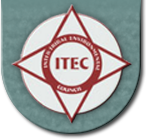Inter-Tribal Environmental Council
"...to protect the health of Native Americans, their natural resources, and their environment"


The United States Congress first authorized the Environmental Protection Agency (EPA) to develop the Multi-Media Assistance Program and was subsequently enacted as the "Indian Environmental General Assistance Program Act of 1992." In 1993, EPA promulgated program specific grant regulations that govern the award of the General Assistance Program (GAP) grants (58 Federal Register 63878, Dec 2, 1993; 40 CFR Part 35, Subpart Q). EPA also developed revised GAP guidelines dated March 9, 2000 outlining the award and management of GAP agreements.
Objective: The principle objective of ITEC's GAP program continues to focus on providing opportunities for its member Tribes to assess, evaluate and develop plans to address environmental and public health issues. Technical assistance is available to develop multi-media programs addressing environmental issues pertinent to the ITEC member Tribes.
The ITEC GAP program is comprised of four main components identified as:
Infrastructure Development
Skills and Training Development
Needs Assessment
Environmental Program Development
GAP Accomplishments
The ITEC staff is available to assist member Tribes with the development or revision of Tribal Environmental Agreements, Memorandums of Agreements, Memorandums of Understanding, etc. The development of these agreements provides the ITEC member Tribes an optional process by which environmental needs or issues are identified as baseline studies and environmental plans are developed. These agreements will also support and identify the willingness of EPA to recognize the programmatic needs and resources essential to the collective effort of environmental protection. Templates are available for distribution to the ITEC member Tribes. Sets of legal environmental codes were drafted to serve as models for the ITEC member Tribes. These model codes are currently available for distribution to the ITEC member Tribes and include solid waste, hazardous waste and water quality.
Program analysis of Tribal environmental management infrastructure is recognized as a priority in order to implement standards for effective internal management and fiscal responsibility. Assistance is available to the member tribes with the development of a Management Plan describing the Organization, Fiscal Management, and Programmatic Administration. Also, assistance is available with the development of Quality Assurance Project Plans if a project involves collecting environmental data. Templates of these plans are available for distribution to the ITEC member Tribes.
The ITEC staff recognizes the need for ITEC member Tribes to access information electronically. Internet access provides an opportunity to access general regulatory topics, program information, and provide an efficient form of information exchange. The ITEC staff currently focuses on maintaining web site material and providing updates in a timely manner. The CNEP staff developed a web site that serves as a one-stop point of communication for outside entities to utilize for information distribution to its ITEC member Tribes. This enables the Tribes access to funding notices, rules and regulations and the Quarterly Newsletter, which allows ITEC member Tribes the availability to access events and concerns throughout the year. Rather than inundating the ITEC contacts with daily updates, the ITEC staff will maintain an updated web site with a variety of options for the ITEC contacts to select from. The ITEC website can be found at www.itecmembers.org.
A quarterly and monthly newsletter is developed and distributed to the ITEC contacts from each of the member Tribes and representatives from various federal agencies and organizations. The newsletter contains articles on specific media initiatives, updates from national Tribal organizations, and upcoming events. Tribal programs are encouraged to submit articles reflecting accomplishments to serve as a "showcase" of Tribal program achievement.
The ITEC staff coordinates and conducts an annual environmental conference that is held in the Tulsa, OK area and the Tribal Environmental Summit that is held in the Dallas, TX area. The conference and summit are a two-day event with a general assembly and breakout sessions. Speakers are scheduled to serve as presenters on topics from a national, regional, and local perspective. Vendors are also coordinated to provide current information on technology and organizations pertinent to environmental program development.
Training is provided by ITEC staff to member Tribes at locations in Oklahoma and New Mexico. Courses offered include 8 hr Hazwoper Refresher, Drones, Open Dump Assessment, Sampling Methods, Radon, Indoor Air, Stream Assessment and Phase I Assessments. Staff asks for member Tribe’s input and will offer classes to meet their needs.
The ITEC staff recognizes the necessity for on-site visits to each member Tribe of the consortium. This activity assists the CNEP staff by identifying current and unique environmental issues addressed by each ITEC member Tribe. This essential program element assists in determining environmental issues with the potential to negatively impact the health and welfare of the ITEC member Tribes. Meetings are conducted on year round by request.
The ITEC staff has compiled databases and templates to assist the ITEC Tribes with the development of environmental characterizations. Information included in the databases include: Tribal oil & gas locations, criteria air pollutants and HAPs, illegal dumps, landfills, transfer stations, UST site monitoring wells, and Tribal watershed data.
The RCRA, Air, UST, Brownfields and Superfund Programs offer assistance to member Tribes on different aspects of these programs that apply to member Tribes and their Tribal lands.